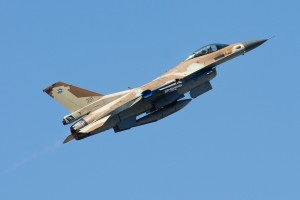BESA Center Perspectives Paper No. 223
EXECUTIVE SUMMARY: An Israeli strike on Iran’s nuclear infrastructure is a risky and militarily-complicated endeavor, but within reach. Israeli ingenuity and determination could lead to a great operational and political success. The international responses are likely to be bearable.
Recent statements by Israel that it has the ability to strike and significantly damage Iran’s nuclear infrastructure reflect Israel’s growing exasperation with the weak reaction of the international community to the Iranian “charm offensive,” and a gradual realization that only military force can prevent the nuclearization of Iran.
Such an attack would require the capability to reach and destroy distant targets, while overcoming aerial defense systems. Yet the number of facilities that would need to be hit to deal a significant blow to Iran’s nuclear infrastructure is generally overestimated.
The essential ingredient for building a nuclear bomb is uranium enriched to at least 90 percent, meaning that the enrichment facilities at Natanz and Fordow must be taken out. The heavy water reactor at Arak – designed to produce plutonium, another fissionable material suitable for building a nuclear bomb – is not yet active but is a necessary target, similar to the Iraqi reactor that was destroyed by Israel in 1981.
To be sure, an Israeli strike on Iran’s nuclear infrastructure would be a risky and complicated military operation. But Israeli ingenuity and determination could lead to a great operational and political success.
Israel’s Military Capabilities
Israel’s long arm is its air force, which has the ability to strike distant targets. According to foreign reports, the Israel Air Force (IAF) has more than 400 fighter planes, more than most countries in the world. The IAF fleet includes the F-15I, one of the world’s most advanced planes, which can carry many precision-guided weapons over long distances.
The IAF also reportedly has a number of aerial refueling tankers that give its fighter jets the option to extend their flight range as far as Iran. The IAF has held a number of exercises, which received much media coverage, in which dozens of aircraft flew long distances, displaying the IAF’s ability to reach Iran.
The flight path to nuclear targets in Iran would cross over Arab countries, as in past long-distance IAF operations. But this time it is possible that these states would turn a blind eye or even cooperate with Israel, because the Sunni Arab world is very concerned about Iran attaining nuclear weapons.
Moreover, the IAF has a remarkable set of technological means that enable it to blind or paralyze air defense systems. Reported IAF operations in Syria and Sudan, which came to light only after the alleged strikes took place, may be an indication of such capabilities. Iran might have good air defense systems that could exact a price from the IAF, but it is unlikely that they could prevent the air force from conducting a successful attack.
An important issue is the ability to destroy underground targets. The US has provided Israel with bunker-buster bombs, and it is likely that the Israeli military industries are also capable of developing and producing similar weapons. An Israeli operation in Iran might also require a ground presence, mainly to ensure that targets hit from the air are indeed destroyed. The IDF special forces have trained for this task. Unfortunately, it would be difficult at this point to achieve a strategic surprise, and it is a shame that a strike on Iran’s nuclear facilities was not executed several years ago. But despite Iran’s awareness of the possibility of an Israeli strike, there is still room for tactical surprises.
International Consequences
Iran’s ability to punish Israel is quite limited. Its missile arsenal can partially or perhaps largely be intercepted by Israel’s anti-ballistic missile system, featuring the Arrow 2 missile. Iran’s terrorist activities against Israeli targets abroad in recent years have not been very impressive. Iran’s allies on Israel’s borders, Hizballah and Hamas, have many thousands of missiles that can do much damage. But their full subservience to Iran remains to be seen. Even if they act as Iranian proxies, Israel has the military capability to invade the missile launching areas and limit the price they can exact from Israel’s home front. Finally, preventing a nuclear Iran is an important objective that justifies Israeli losses.
The expectations for serious international negative reactions to an Israeli military strike on Iran are also greatly exaggerated. Israel has attacked nuclear installations in the past, specifically in Iraq (1981) and Syria (2007), with few international repercussions. Many hypocritical denouncements are likely, accompanied by a private feeling of relief. Many countries, particularly in the region, are actually waiting for Israel to pull the nuclear chestnuts from the fire.
Conclusion
At a time when appeasing Iran seems to be in vogue, an Israeli strike could invigorate elements in the international arena who are unwilling to accept an Iran with a nuclear breakout capability. In addition, many people around the world would be reminded that muscular reactions to evil regimes are often truly necessary.
A decision by Israel to strike Iran would be a historic gamble. Nevertheless, history, necessity, and common sense point toward an attack.
BESA Center Perspectives Papers are published through the generosity of the Greg Rosshandler Family
Click here for a PDF version of this article
(Photo Credit: Flickr/joseluiscel)


